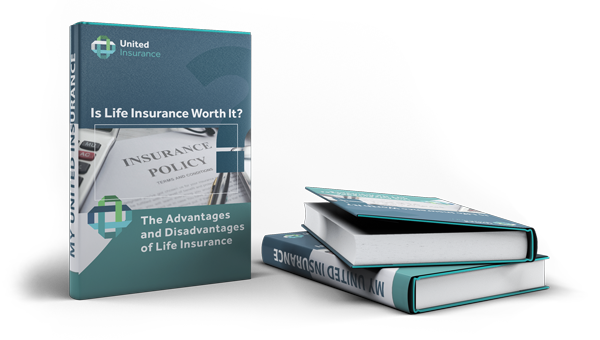
Parents with life insurance often wonder what happens when they have a baby. Do they need to get a new policy? What about child riders? In this blog post, we will answer all of your questions about adding a child to a life policy! We will discuss how the rider works and who is eligible for coverage. So, if you are expecting or have recently welcomed a little one into your family, keep reading!
What is a Child Rider?
Child riders, also referred to as child insurance riders or child term riders, allow you to enhance a term life insurance policy that you’ve taken out to cover yourself or your spouse. This type of rider covers all of your children as well as any children you may have in the future.
If your child passes away, your policy’s child rider would allow you to collect a death benefit. You could then use this money to cover funeral and burial expenses or other costs. Depending on how your policy is structured, a child rider may be convertible to permanent life insurance coverage.

How Does This Rider Work?
Typically, the option to purchase a child rider is offered at the time you purchase a new life insurance policy. Some insurance companies may allow you to add a child rider to an existing policy, though this isn’t always the case.
Most child riders work by covering children from infancy up to age 18, though some policies may extend coverage up to the child’s 25th birthday. You pay an additional premium for the rider which covers all of your children. The cost varies based on the insurer, but it may be less than $5 per month, depending on the size of the death benefit.
The insurance company may require you to be within a certain age range to qualify for a child rider for life insurance. For example, you might need to be at least 20 but younger than 55 to qualify. You may need to answer a health questionnaire about your children, though a medical exam usually isn’t necessary. Keep in mind that pre-existing conditions may not be covered.
If your child passes away within the covered age window then your rider would allow you to receive a death benefit. The amount of the death benefit is determined by the terms of the rider, but $10,000 is a typical coverage amount. Proceeds from a child rider are paid out in a lump sum and are generally tax-free.
If you never need to use the death benefit, your child may have the option to convert a term rider into permanent life insurance for themselves. The policy would then remain active as long as the premiums are paid.
Who Needs This in Their Plan?
You might consider purchasing a child rider for your life insurance policy if you want to enhance your coverage in the face of a worst-case scenario. The loss of a child can be emotionally devastating and a child rider can ease some of the financial burdens of paying for funeral or burial arrangements.
Child riders cover your children based on their health status at the time the policy is purchased. So if they develop a life-threatening condition later, you already have this coverage in place. You may also consider a child rider if you’d like your child to be able to convert it to permanent life insurance later.
Convertibility can be an attractive feature of child riders because they ensure that you get some value out of the coverage. Ideally, you never have to use the rider’s death benefit. And if your child can convert the policy later then the premiums you’ve paid up to that point haven’t gone to waste.
Term vs Whole Life
A child term rider is one way to purchase life insurance for your children. But you could also choose standalone term life or whole life insurance policy for kids.
Term life insurance covers your child for a set period. You pay in a premium and if something happens to your child, you’d receive a death benefit. For example, you might choose $10,000, $20,000 or $30,000 as a death benefit. If you never need to use the coverage, the policy would expire once the term ends.
Whole life insurance policies for kids also offer a death benefit for a covered child. This benefit can range from $5,000 up to $50,000, depending on the policy. This is permanent life insurance that covers your child for as long as premiums are paid. The younger your child is when you buy coverage, the lower the premium tends to be.
One of the main selling points of whole life insurance for kids is the cash value component. Child whole life coverage can accumulate cash value over time as you pay in the premiums. Your child can then borrow against that cash value later or withdraw it from the policy. Or, they could continue paying the premiums as adults, allowing the cash value to continue to grow. Term life policies don’t accumulate cash value.
You might choose term life insurance or whole life insurance if you have just one child to cover. Whole life could be attractive if you’re interested in giving your child lifelong coverage with the potential to grow cash value. A child term rider, on the other hand, can offer blanket coverage for multiple kids. There’s no cash value but it may be a cheaper option compared to buying one or more standalone policies.

Insurance Planning and Buying Tips
- If you’re buying life insurance for the first time. It is important to understand how much coverage you might need and what type of policy could work best. Term life and permanent life insurance can offer a similar range of death benefit amounts. Although term life tends to be cheaper where premiums are concerned. The younger and the healthier you are when buying either type of life insurance, the less you’re likely to pay. Permanent life insurance can also offer the opportunity to accumulate cash value over time.
- In addition to child riders, you may also consider other types of riders such as an accelerated death benefit or guaranteed return of premium rider. While some life insurance riders may be added on for free, others do require you to pay an added premium. Getting online quotes for life insurance can help you estimate your costs.
- Consider talking to your insurance advisor about the pros and cons of choosing a child rider for life insurance and whether or not this might be something you need. Finding a qualified insurance advisor doesn’t have to be hard. My United Insurance has a free quoting tool that matches you with up to three licensed agents who serve your area, and you can interview with them at no cost to decide which one is right for you. If you’re ready to find an agent who can help you achieve your financial goals, get started now.
Bottom Line
Adding a child rider to your life insurance policy can offer protection for your kids at an affordable price. If you have more than one child, a child rider could be a cheaper option compared to buying multiple standalone policies. Keep in mind that riders generally don’t accumulate cash value like whole life insurance does. If you’re not sure whether or not you need a child rider, talk to a insurance advisor. They can help you understand your life insurance needs and find the right policy for you and your family. My United Insurance has many insurance agents licensed in your area that can help. Get started now to find an advisor who’s right for you!
